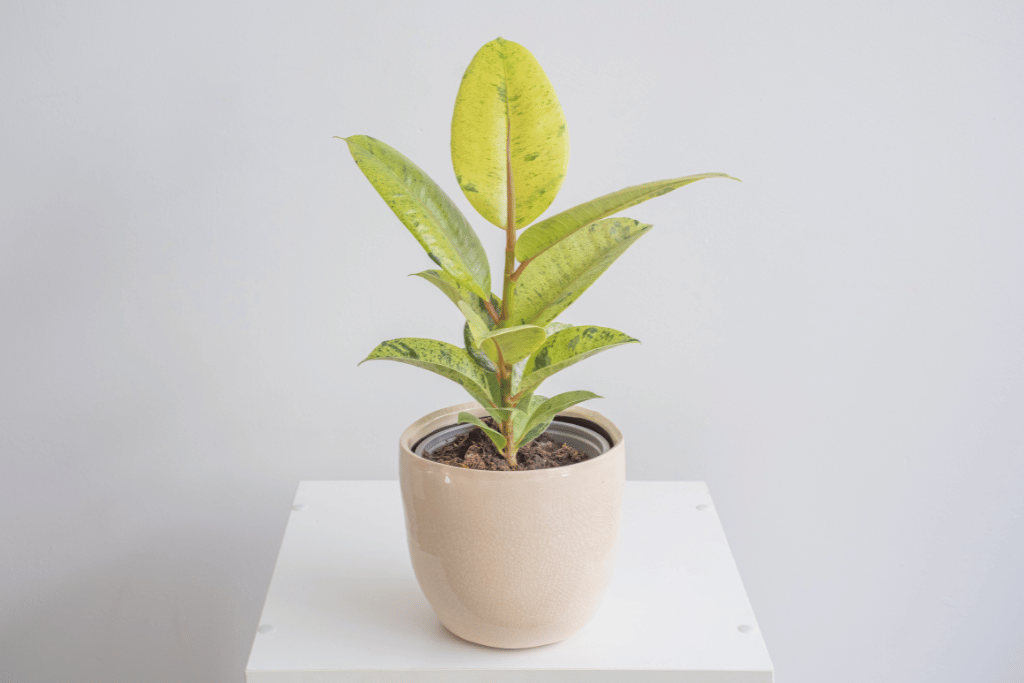Oak trees may not be as common as other species in bonsai, such as pines, junipers and maples, but they still make for an excellent bonsai and you can grow oak bonsai from seed easily.
Oak bonsai’s craggy, old bark and mighty but tiny trunks can put on an illusion of old age. They can live for hundreds of years and are very hardy, withstanding quite cold periods. Growing oak bonsai from seed is a rewarding process, and I’ll explain how to do it in this article.

Propagating oaks from seed is a very straightforward process. You can easily collect the seeds in autumn when oak trees drop their acorns. If you don’t have any near you, you can also purchase seeds online for a small price.
Collecting Acorns
From mid-September to December, you can collect acorns. You’ll find them scattered around oak trees, and you should only take green or brown ones with no holes from insects.

Planting Acorns/Seeds
Once you have collected acorns, you can plant them straight away. Fill a grow pot with compost, making holes to plant the acorns. After this, cover the acorns with compost and then water them thoroughly. Within around 1-3 months, they should germinate.
The process is slightly different if you decide to buy seeds online. I recommend stratifying the seeds (giving them a cold period) in a fridge.
First, I leave the seeds to soak in lukewarm water for 24 hours. After this, I wrap them in a damp paper towel and put a plastic bag over them, leaving them in the fridge for a few weeks. After this period, you can plant them in your desired soil mix. I usually use a combination of compost, perlite and sand – however, with oak, they will do fine in just compost.
Growing Oak Bonsai From Seed
With some patience, your seeds will germinate and become tiny oak seedlings. . Oak seedlings will require different care to fully grown trees. However, their care follows similar steps.

Watering
Seedlings will have a lower water demand than older trees, especially in autumn and winter. You should consider this when watering, as seedlings can quickly die from underwatering and overwatering. I like to poke my finger an inch deep into the soil to test the moisture – if it’s still wet, then I hold off on watering until the soil dries out slightly.
When watering seedlings, I like to use a fine mist. This is a personal preference, but it is easier to take care of the seedlings by using this method as it won’t flood the roots.
Fertilizing
Due to their small and sensitive roots, I typically don’t fertilize seedlings for a few months. Feeding them immediately can burn their roots and kill them very quickly, so I make sure to use just diluted concentrations and only after a few months.
The compost I usually use is a specialized one for seedlings, meaning that it provides them with nutrients without me having to fertilize them (although these nutrients will only last for a few weeks). You can find these specialized potting mixes for a similar price as any other compost.
Repotting
If you have decided to plant your acorns in a tray, then you might find that the seedlings may get a bit crowded after a while. If this is the case, you can gently prick out the seedlings, trying not to disturb their roots.
You can then plant your oak seedlings each in their own pot and let them grow for a year or two until they become root bound. You can typically see this when roots are coming out of the bottom of the pot or the roots are circling themselves multiple times.
When repotting seedlings, you can gently rake some of the soil off the sides and bottom to try and loosen the roots. This allows the roots to spread faster in the soil in the new pot. However, make sure only to take off small amounts of soil.
Wiring
As with my other seedlings, I don’t wire oak seedlings for the first year. I let the tiny oaks grow freely, allowing them to get established quickly and enabling me to begin work on them much sooner.
After the first year, I usually apply a low gauge of annealed aluminum wire (1mm or 1.5mm) to introduce twists and bends into the trunk. This helps form the tree’s structure when it’s older, and it’s much easier to do this when it is young.
Further Reading
Here we’ve discovered how to grow oak bonsai from seed. If you would like additional information and detail on the general care of seedlings, you can refer to this article, in which I discuss the topic more thoroughly.
Growing and Caring for Bonsai From Seed
If you follow this process and are patient you’ll have an oak bonsai in just a few years! For now, keep giving those oak seedlings good care and let them develop over time.



